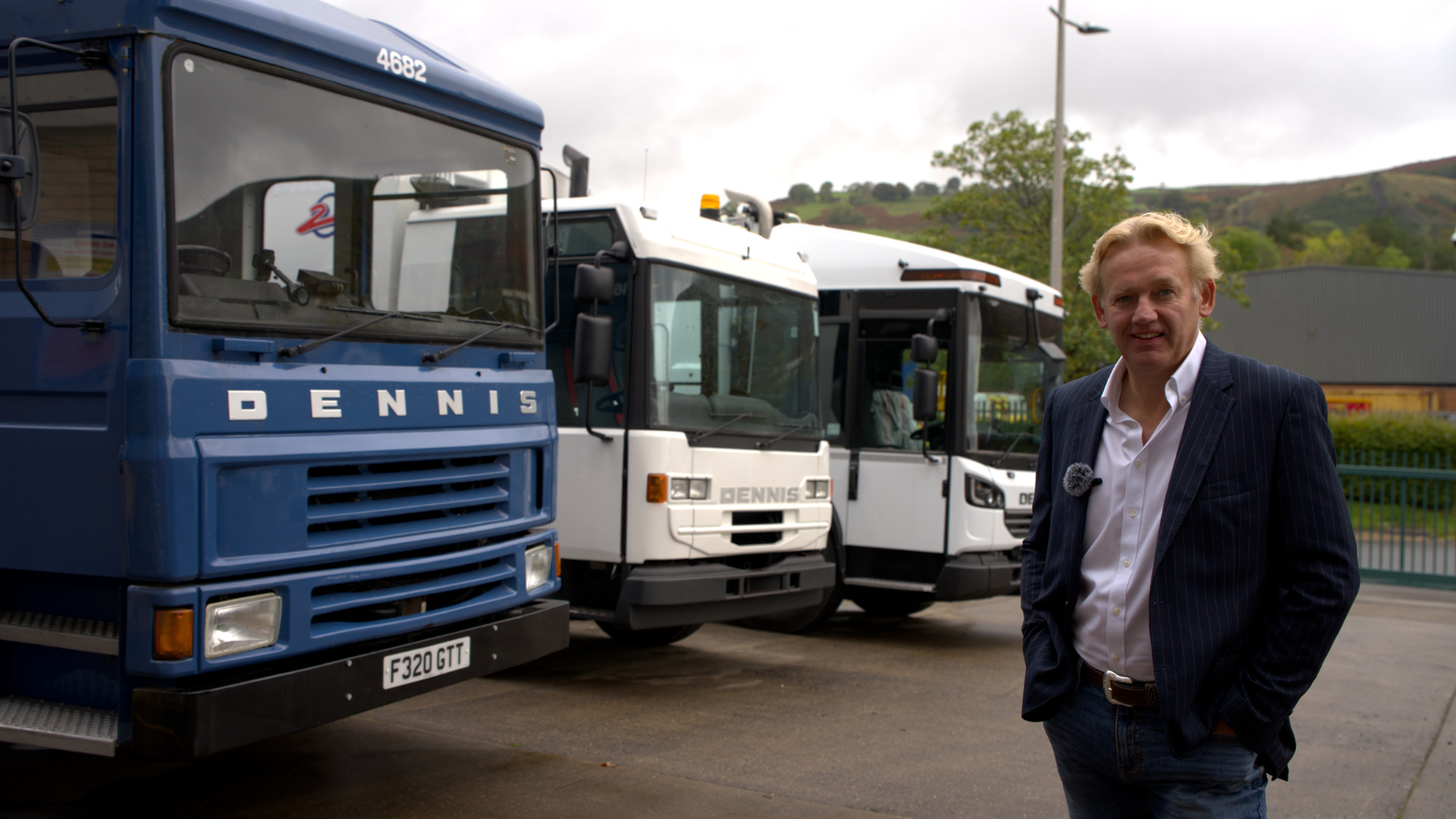The story of the Elite, a journey through time

In 1985 the company was formed by merging Hestair Dennis, which built Delta chassis in Guildford, with Hestair Eagle, a body-builder in Warwick.
The company sold around 350 Delta’s with Phoenix bodies per year in those days, which is roughly a third of Dennis Eagle’s current volume. But the vehicle was very dated, so they took decisive action to keep that market. The Delta was given a quick facelift in 1988 but meanwhile, they set about the serious work of developing a new chassis.
Aftermarket Director Geoff Rigg takes up the story: “I was an apprentice at the time and remember seeing the new vehicle on the drawing board. It was launched in 1992 and although it was a success, nobody could have realised just how influential it would be.
“Looking at the Mark 1 Elite, it’s remarkable how familiar it seems. Alongside the latest Elite+, you can clearly see the family features. And compared with its Delta predecessor, it was revolutionary.”
This Delta chassis was originally built in 1988 before being rebuilt by the Aftermarket team. It had a Perkins Phaser 180 engine (Euro-1-compliant engines weren’t required until 1993) and drum brakes with no ABS. Its six-speed, manual Eaton gearbox was only partially synchromeshed. Getting in was like climbing up the Blackpool Tower and when you arrived, there were no seatbelts!
The design was utilitarian. While the simple controls and switches were quite driver-friendly and well laid out, it was an effort to drive. Drivers’ legs would ache from all the strenuous clutch work and they needed to be physically strong.
The RCV’s body was designed for a bag-loading nation with a huge 2.8m3 hopper that couldn’t be choked. It was operated from two levers at the front of the vehicle – out of sight of the operation itself. It could be dangerous.
Inside the cab, the noise, emissions, and rattling made driving it hard work.
Perhaps the first change that you’d see in the new Elite Mark 1 was the much easier one-step entry. The flat floor, the brighter interior and the much better visibility from the cab were also major improvements. But all concepts were maintained throughout the evolution of the Elite chassis.
The refurbished Mark 1 vehicle has a Cummins ISBe Euro-3-compliant engine with 250bhp, with reduced emissions and less noise. It also has disc brakes and ABS, reflecting the increased emphasis on safety.
But the most notable change was the Allison gearbox which was automatic – so no gearstick, no clutch and relief for the driver. The layout of switches and controls was even better. It was obvious that alongside efficiency, designers were increasingly thinking about the needs of both drivers and crew, particularly their safety and comfort.
Outside, the first Elites routinely had Phoenix 2 bodies mounted with containerisation in mind. These had a much smaller hopper – just 1.6m3 – which enabled the addition of bin lifts as wheeled bins were introduced.
And so the Elite chassis was born and developed over the years into an illustrious line, with the Elite 6 only recently replaced by the Elite+. Although it was launched 30 years after the first Elite, it is still recognisable as part of the same dynasty with the hallmarks of one-step entry, flat floor, and great vision for drivers.
The Elite+, however, has taken the comfort and needs of drivers and crew way beyond the Elite 2 and even the Elite 6 to create a truly modern workstation for both drivers and crews, a market leader in its own right.
“We’re mainly selling Elite’s in the UK, Europe and Australia,” said Geoff.
“But we’re also introducing the ProView to the USA and Canada and it has the same lineage and the same familiar features … it’s part of the same family. And it feels as if we’re introducing the same original concepts again of safety, comfort, and great visibility but this time to North America.
“And looking at the latest in the line, the Elite+, everything has been thought about. To the original Elite Mark 1 designers, features like the automatic braking system, which senses the driver is leaving it too late to brake and so automatically applies them, would have seemed like science fiction.
“They’d recognise the vehicle straight away, of course, but what would they have made of the Electronic Stability Program or even the idea of low-level lighting for the comfort of the crew?
“And it makes you wonder, what will we be looking at in 30 years’ time?”
You can watch the full video of the Elite journey, here.